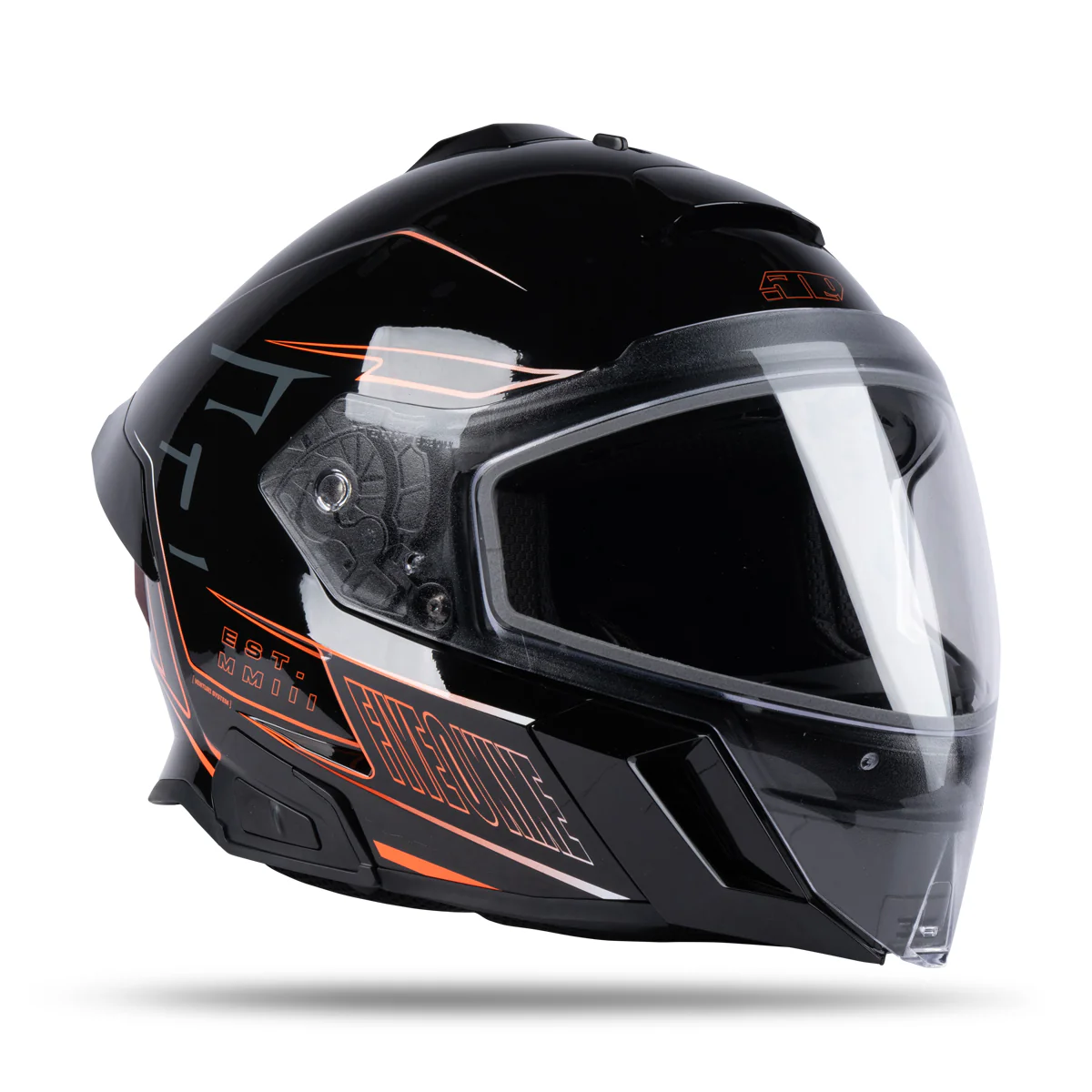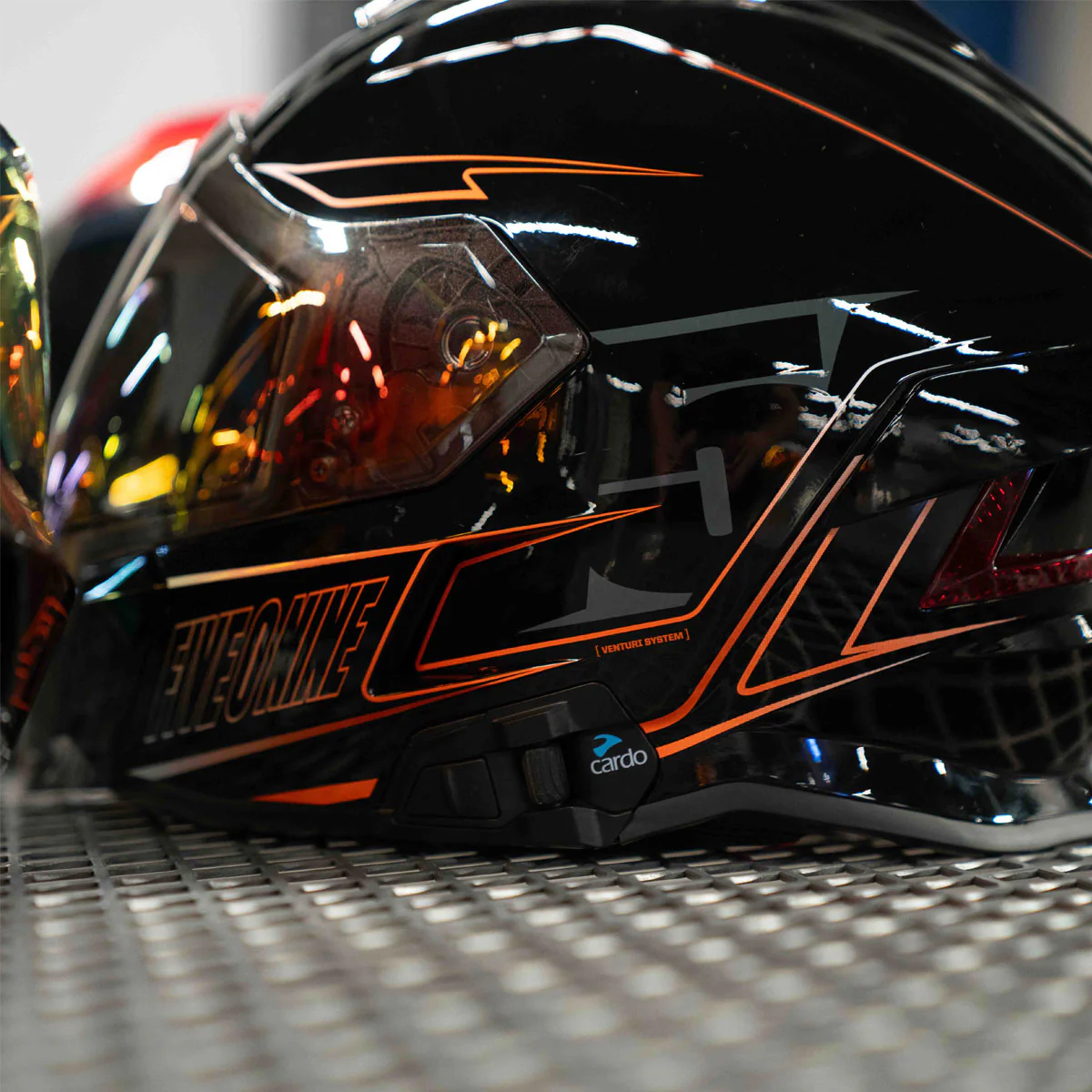Spokane, WA – The 509 Mach V Commander enters the street helmet market not as a simple piece of protective equipment, but as a centralized command unit for the rider. Its core design principle is the seamless fusion of a communication system, advanced fitment options, and aggressive aerodynamics into a single entity. The result is a helmet that presents a specific, technology-forward value proposition, but one that is defined as much by its deliberate compromises as its integrated strengths.
Analysis of Core Components
The foundation of the Mach V Commander is its dual-certified shell, meeting both DOT and the more rigorous ECE 22.06 standards. The latter is a critical data point, involving 12 additional impact points and a higher impact speed test (8.2 m/s vs. 7.5 m/s) than its predecessor. This certification provides a tangible baseline for protective capability. The helmet is offered in two constructions: a standard injected molded polycarbonate and a hand-laid carbon fiber option.
The specified weight for the standard model begins at 1750 grams. This positions the Commander at the heavier end of the spectrum, a direct consequence of its primary feature: a fully integrated Cardo Dynamic Mesh Communication (DMC) system. For comparison, many non-integrated, premium composite helmets occupy the 1400-1600 gram range. The carbon fiber variant reduces the Commander’s weight to 1670 grams, a measurable but not transformative reduction. This mass is a critical factor and a non-negotiable trade-off for the convenience of a pre-installed communication suite.
The “customizable fitment” is a two-part system. First, the Pressurized Sound Isolation (PSI) system, which utilizes an air pump to inflate bladders behind the ear cups. The stated goal is to create a tighter seal for passive noise cancellation. Second, for 2025, 509 has introduced newly designed cheek pad inserts to offer more precise fit tuning for its intermediate oval head shape. User reports suggest the initial fit is exceptionally snug, requiring a significant break-in period, with some riders needing to select a size larger than their typical measurement.

Performance in the Field
The helmet’s core function—impact protection—is validated by its ECE 22.06 certification. Its performance in secondary, rider-experience metrics, however, is more complex.
The “Venturi Venting System” is engineered to create a negative pressure zone, pulling moist air and heat from the helmet’s interior. This results in substantial airflow, a clear benefit for riders in warmer climates or during high-exertion riding. The aerodynamic design is aggressive, intended to manage airflow at speed.
This high-flow ventilation, however, contributes directly to a significant weakness: interior noise levels. Multiple analyses from riders indicate that the Mach V Commander is a loud helmet, particularly at highway velocities. The PSI air-pump system, designed to mitigate this, is reported to offer minimal perceptible difference in noise reduction. Therefore, while the JBL audio system is of high quality, its output can be diminished by the ambient wind noise it must overcome.
The integrated Cardo DMC system itself performs to the standard of a standalone unit, offering robust mesh connectivity for up to 15 riders. The controls are integrated into the helmet shell, and the battery (a 900 mA lithium-ion unit) is specified for a variable 6-8 hours of life under optimal conditions. This integration eliminates the ergonomic and aerodynamic penalties of an externally mounted communicator but dictates the helmet’s entire architecture.

The 509 Mach V Commander is not a universally superior helmet; it is a purpose-built solution for a specific user. The target rider is one who prioritizes the seamless integration of a top-tier communication system above absolute lightweight construction and acoustic isolation.
The decision to acquire the Commander is an exercise in understanding its core equation. The primary variable is the value of its integrated Cardo DMC system. This convenience is paid for with a quantifiable penalty in mass and a documented increase in wind noise. The dual DOT and ECE 22.06 certifications provide a solid foundation of safety, and the Fidlock chinstrap and chase light are functional enhancements. Yet, the helmet’s performance cannot be evaluated without acknowledging these inherent compromises. It is a system, and like any system, its overall performance is dictated by the interplay of its individual components.

